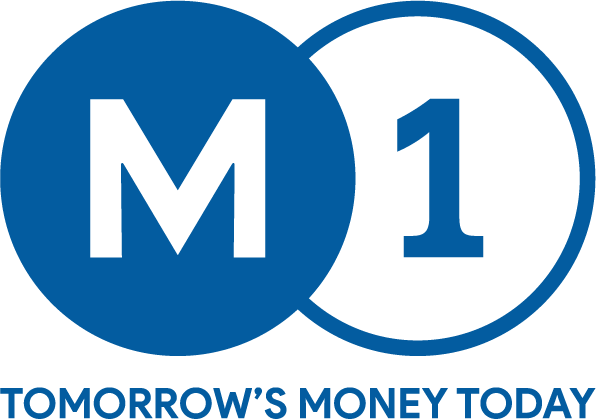Adoption of TReDS has picked up pace on account of ease with which sellers and buyers can source working capital finance on the platform via digital bill discounting, says Sundeep Mohindru, Promoter & Director, M1xchange, a digital invoice discounting platform for MSMEs. In an interview with ET Digital, Mohindru talks about the regulatory support being offered by the Reserve Bank of India (RBI) and how it gives businesses confidence to adopt TReDS. TReDS is an electronic platform for facilitating the financing or discounting of trade receivables of MSMEs via multiple financiers.
The other benefit of adopting TReDS is that it can lead to a direct reduction in the cost of goods and services purchased. Companies can secure better deals and discounts from suppliers by facilitating early payments to vendors by discounting their trade receivables, he says. Edited excerpts:
Economic Times (ET): According to RBI’s latest data, invoice discounting via TReDS saw a 73% Y-o-Y surge with invoice transaction value touching Rs 30,320 crore in Q2 FY24 against Rs 17,525 crore in Q2 FY23. Moreover, TReDS also witnessed a 22% growth in Q2 FY24 as compared to Q1 FY24 signifying the arrival of the festive season as MSMEs see increased demand and rush during these times. What according to you is the reason for this growth in adoption of TReDS?
ET: How is the growth of the TReDS helping in solving the working capital problem for MSMEs across the country?
SM: The TReDS platform is a financial lifeline for India’s MSMEs and a remedy for the recurring problem of late payments. Because this platform offers instant liquidity at the touch of a button, it has proven to be incredibly beneficial for smaller firms. TReDS has enabled total transactions over Rs 2,00,000 crore, significantly improving MSMEs’ cash flow. Financial institutions bid on invoices that have been approved by the buyer and have passed quality and quantity checks. As a result, the risk is dependent on the buyer’s strength of balance sheet, which is often that of a reputable company or government agency.
As a result, interest rates related to TReDS are between 7 and 11% per annum, whereas outside TReDS unsecured borrowing ranges from 16 to 24% per annum. It also minimises paperwork, guarantees on-time payments and shields MSMEs from risk by promptly debiting the financier’s account and crediting the MSME seller’s account 24 hours after the offer is accepted.
ET: Why should more companies in the country look at adopting TReDS?
SM: Adopting TReDS can lead to a direct reduction in the cost of goods and services purchased. By facilitating early payments to vendors by discounting their trade receivables, companies can secure better deals and discounts from suppliers. This, in turn, translates into lower costs for the company and ultimately lower prices for consumers.
The adoption of TReDS can foster a healthier and more robust supply chain ecosystem. By ensuring timely payments to vendors, companies can strengthen their relationships with suppliers and encourage better collaboration. This, in turn, can lead to improved product quality, reduced lead times and enhanced overall supply chain efficiency.
TReDS provides an alternative and efficient funding mechanism for making vendor payments. Instead of relying solely on traditional financing methods, companies can leverage TReDS to access a wider pool of investors, including institutional investors and banks. This enhanced access to capital can improve liquidity and reduce reliance on expensive debt financing.
TReDS streamlines the vendor payment process, leading to significant reductions in administrative costs. The end-to-end digital platform automates the tasks associated with invoice verification, payment processing and reconciliation. This automation frees up valuable time and resources for both buyers and sellers.
ET: What are the further areas of improvement in the TReDS platform?
SM: Earlier this year, the RBI permitted insurance companies to come onto TReDS. This, along with a wider pool of financiers, has significant implications for MSMEs and the trade finance landscape. These changes enhance the accessibility and security of trade receivables financing, making it more attractive for businesses, especially those with lower credit ratings. Insurance companies are in the process of preparing their product for TReDS. An early and large participation by insurance companies will bring more safety net for financiers and, in turn, higher liquidity for MSMEs.
The current TReDS window is buyer-driven and is completely dependent on the buyer’s acceptance of the invoices. The UK Sinha committee’s report recommended creation of a TReDS second window which is envisaged as a “buyer less” model wherein the need of buyers to accept the invoices is not required.
In addition, enabling integration of TReDS with the GST system to enable MSME sellers submit authentic invoice data real-time without the need for any physical PDF upload can be looked at. The deposit taking NBFCs may be permitted to undertake factoring business. This will help to increase the liquidity for MSMEs.
ET: What is the outlook and sentiment of banks towards TReDS and how is the adoption faring at their end?
SM: The outlook and sentiment of banks towards TReDS has been positive, recognising the potential benefits they offer. Banks have started setting up dedicated teams in regions for feeding the growth requirements TReDS is providing banks with an opportunity to expand their business by offering discounted financing to suppliers on the platform. This can be a lucrative revenue stream for banks
TReDS platforms incorporate credit risk assessment mechanisms, which can help banks mitigate the risks associated with lending to suppliers. This is short-term exposure for banks with the benefit of Priority Sector Lending (PSL). This can make financing through TReDS more attractive to banks.
TReDS platforms streamline the lending process, by offering the digital process from onboarding to transaction at variable cost. The banks get fully onboarded customers with provision of KYC and their invoices. Physical access to customers is not a limitation for banks on TReDS, making it more efficient and cost-effective for them.

